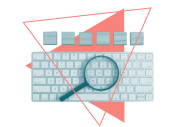Real Advice for Startup Founders: You Don’t Need to Fake It—But You Do Need Clarity
Key Points
Solve Real Problems, Not Just Build Features. Startups succeed when their product genuinely meets a need or eases a frustration—not just when it looks good.
Get Close to the Customer Through Real Research .Talk to people, study their behavior, and go beyond surface data to understand what drives their decisions.
User Experience Is Everything. If your product isn’t easy to use and enjoyable, people will leave—even if it solves a problem. Simplicity builds trust.
Did you know over 62% of Americans want to start their own business?
That stat used to excite me—and also quietly overwhelm me.
Because once you’re in it, you realize: it’s one thing to start a business, and a whole different thing to build one that’s real, lasting, and grounded in something meaningful.
If you’re here, maybe you’re just starting out. Or maybe you’ve been going for a while but feel stuck in the noise.
Either way—you’re not alone. I’ve been there.
I’ve made the wrong offers, rushed the brand, launched without listening, and tried to skip ahead when I hadn’t really built the foundation.
And what I’ve learned—through every messy attempt—is this:
The strongest businesses don’t try to look successful. They’re rooted in clarity.
That’s actually one of the most powerful ways startups can look more professional—by knowing who they serve, why they exist, and how to communicate that with quiet confidence.
Understand Your People—Deeply and Honestly
If there’s one place not to cut corners, it’s this: know your audience better than they know themselves.
Not just the data, but their actual lives.
What keeps them up at night? What do they dream about but won’t say out loud?
What problem are they really trying to solve when they land on your site?
This doesn’t come from metrics—it comes from listening.
Run customer interviews;
Ask open-ended questions;
Look for the words they repeat;
Notice what lights them up and what shuts them down.
These insights shape everything—from your offers to your captions—and give your brand the depth people can actually feel.
Map the Journey, Not Just the Funnel
We love to talk about funnels. But real people don’t move through funnels—they move through feelings.
That’s why customer journey mapping is so much more than a marketing exercise.
It’s a tool to see your business from the inside out—from the moment someone first discovers you to the second they decide to buy (or don’t).
- Where do they hesitate?
- What confuses them?
- Where do you lose them—and where can you win them back?
When you see the journey clearly, you stop guessing.
You start creating touchpoints that guide, support, and invite them forward—with intention, not pressure.
And that’s what builds trust. That’s what makes people come back.
And yes—that’s what makes your business look and feel more professional without faking anything.
I’ve learned (the hard way) that growth doesn’t come from trying to look like you’ve got it all figured out.
It comes from honesty, clarity, listening deeply, and building from the inside out.
That’s the vision. That’s the work. And if you’re doing it too—you’re already on the right path.
Focus Groups: The Startup Shortcut Most People Skip
If there’s one thing I wish I did earlier, it’s this—actually listening to what people feel, not just what they say.
Focus groups aren’t just for big corporations with big budgets. For startups, they’re a goldmine of clarity. Because when you’re building from scratch, guessing is expensive.
You’re not just testing features—you’re tuning into real human pain points.
You’re seeing their faces light up when something clicks, or the hesitation when it doesn’t. That’s insight you can’t get from analytics alone.
Done right, focus groups help you:
Segment your audience — Not everyone needs the same thing. Grouping by emotion, goals, or experience gives you clarity on who you’re actually building for.
Understand core pain points — You’ll hear the patterns: the frustrations, the workarounds, the “I wish this existed.” That’s your blueprint.
Refine your messaging + product — With real voices in mind, it’s easier to speak their language and adjust your offer without burning cash on the wrong bet.
And here’s the truth most people miss: the best marketing? It doesn’t come from your imagination.
It comes from listening, mapping, and caring enough to make it better.
Customer Interviews: Your Shortcut to Clarity
If you’re not talking to your customers directly, you’re guessing. And in startup life, guessing is expensive.
Customer interviews aren’t just research—they’re connection.
They show you how people actually experience your product, what frustrates them, what they wish it did, and what made them hit that follow, signup, or buy button in the first place.
You’ll hear things that surprise you. You’ll notice patterns. You’ll uncover new angles you didn’t even think about.
Here’s what you really get from doing them regularly:
Honest feedback that drives product decisions — Not in theory, but in the messy, real world of how your offer fits into someone’s life.
Clarity on what truly matters — You might think your best feature is X, but your customers are only excited about Y. That’s your opportunity.
Language that converts — People hand you the exact words they use when talking about your product. That’s gold for your copy and campaigns.
The truth? Your best marketing strategy might already live in your DMs, Zoom calls, or email replies.
You just have to start asking the right questions—and really listen to the answers.
Because at the end of the day, understanding is the most underrated growth strategy there is.
Develop a Viable Product or Service That Actually Solves Something
If there’s one thing I’ve learned—it’s this: the best products don’t start with features, they start with feelings.
If your offer doesn’t solve a real problem or make someone’s life easier, it won’t stick—no matter how sleek your design is.
Before you build, sell, or pitch anything, ask yourself:
Does this matter to the person I’m building it for?
And when you’re ready to launch, don’t skip this next step:
Protect your ideas – Whether it’s a product, brand name, or content framework, talk to a trademarks attorney early. Your startup’s IP is worth more than you think.
Conduct Market Research: Not Just Data—Real Insights
Market research isn’t just something you check off. It’s how you make sure your product doesn’t flop.
This means:
Interviewing real people (not just surveys).
Observing what they say and how they behave.
Identifying the emotional reasons behind what they buy or avoid.
You’re not just collecting facts. You’re learning what drives decisions—and where your product fits into that moment.
Want to build something people actually want?
Start by understanding what frustrates them, what excites them, and what they haven’t been able to find… yet.
Focus on User Experience: It’s the Invisible Advantage
If people don’t get it or can’t use it easily, they’ll bounce. No matter how smart your solution is.
That’s why user experience isn’t just “design”—it’s strategy.
From onboarding to checkout to how someone feels after using your product—every touchpoint matters.
So here’s my best advice:
Build fast, test faster.
Watch people interact with your product—what confuses them?
Pay attention to emotions—where’s the friction, where’s the joy?
The smoother the experience, the more likely they are to stick around, recommend you, and come back.
Be Innovative
To stand out in a crowded market, you’ve got to do more than just exist—you’ve got to mean something.
Innovation isn’t about flashy features; it’s about solving a real problem in a way others haven’t thought of yet.
Look for ways to make your product or service feel different—whether that’s through a small detail that changes the experience, a pricing model that actually respects people’s budgets, or a marketing message that speaks to what your audience truly values.
That’s how people remember you.
- Test Your Product or Service (Before You Go All In)
Don’t wait until launch day to find out something’s off. Get your product or service in front of real people early—even if it’s just a rough version.
You’re not looking for perfection; you’re looking for insight.
Testing with your actual target audience helps you spot what’s confusing, what’s missing, or what’s unexpectedly loved.
It saves time, builds trust, and gives you confidence that you’re building something people truly need.
- Stay Agile (Because Change Is the Only Constant)
What worked last month might not work next quarter. That’s just how fast things move now.
The best founders aren’t rigid—they’re responsive.
Being agile means listening, evolving, and sometimes letting go of what you thought was “the thing.”
Stay open to feedback, keep your systems lean, and be ready to pivot if your users’ needs shift. Flexibility is your secret weapon in uncertain markets.
- Track and Analyze Customer Feedback (Like a Treasure Map)
Customer feedback isn’t just helpful—it’s pure gold. It shows you exactly where your product delights and where it disappoints. But to turn feedback into action, you need more than a comments folder. You need a system:
Set up a Feedback Mechanism
Make it easy and welcoming for people to share what they think. Surveys, DMs, post-purchase questions—it all counts.Monitor Feedback Consistently
Check in regularly, not just when sales drop. Watch for recurring comments, especially things that come up more than once.Organize by Theme
Break feedback into buckets—like product quality, experience, pricing, or customer support—so you can see where the pressure points are.Respond Thoughtfully
Reply like a human, not a robot. Thank people, even for criticism. Let them know their voice matters.Take Real Action
Feedback without follow-up is a missed opportunity. Use what you hear to improve your product, rethink how you communicate, or fix what’s broken.
Use Digital Marketing Strategically (Not Just to Be Online)
Digital marketing isn’t just a buzzword—it’s how people find you, connect with you, and decide if they trust you.
And when done with intention, it becomes one of the most powerful tools to grow your business without burning out.
Here’s how I’d break it down if you’re trying to build something real (and not just chase trends):
- Start With a Clear Plan and KPIs
Before you post anything, get clear on what you want out of it. More leads? Stronger brand presence? Community? Choose a few meaningful KPIs (like engagement rate or cost per conversion) that actually reflect your goals—not just vanity numbers.
- Build a Strong Online Presence
Make your website work for you. It should be clean, mobile-friendly, fast, and aligned with your message. Don’t forget SEO—people can’t buy from you if they can’t find you. Show up where your audience searches.
- Create for People, Not Algorithms
Social media should be a place of connection, not just noise. Share content that educates, helps, or simply relates to what your people are thinking. If they feel seen, they’ll stay. Use storytelling. Invite conversation.
- Leverage Email Like You Care
Email still works—if it’s done right. Skip the salesy spam and create value instead. Offer helpful insights, quick wins, or behind-the-scenes stories. Treat every email like a way to build trust.
- Use Paid Ads to Speed Things Up (Smartly)
If you want to move faster, PPC ads are your best friend. They let you test, reach the right audience fast, and see what messaging sticks. Start small, track results, and scale what works.
- Always Be Optimizing
Marketing isn’t a set-it-and-forget-it thing. Track what’s actually moving the needle. Double down on what works. Drop what doesn’t. And always be learning—from your audience, your analytics, and your own experiments.
Real Talk: Seek Wise Counsel (It Might Save You Years)
If you’re building something from scratch, one of the most powerful things you can do is surround yourself with people who’ve done it before.
Not just for motivational quotes—but for the hard-won lessons, quiet nudges, and honest perspectives that you might not see on your own.
Here’s why it matters:
They’ve seen what works (and what absolutely doesn’t).
They’ll spot the blind spots you missed and save you from reinventing the wheel.They can help you grow faster.
With their network, their experience, and their shortcuts, you’ll spend less time guessing—and more time building.They’ll challenge your ego in the best way.
Sometimes we’re too close to our own ideas. A wise mentor can help you zoom out and realign with what really matters.
It’s not always easy to take advice—especially when you’re passionate and have a clear vision. But staying open to feedback can be the difference between spinning your wheels and scaling smart.
So if you’re a startup founder, here’s your next move
Find someone you trust who’s a few steps ahead. Ask better questions. Listen more than you speak. And take the wisdom—but filter it through your own clarity and values.
Before You Go
Starting something new is hard—but it’s also full of magic. Don’t go it alone.
✔ Understand who you’re building for.
✔ Build something that solves a real need.
✔ Listen to your audience and your gut.
✔ Use the digital tools—but make them work for you.
✔ And above all—stay open to wise counsel. It’ll shape everything.
You’ve got this.
P.S. If this felt helpful, check out more founder-friendly insights and real stories on the rest of the site.























